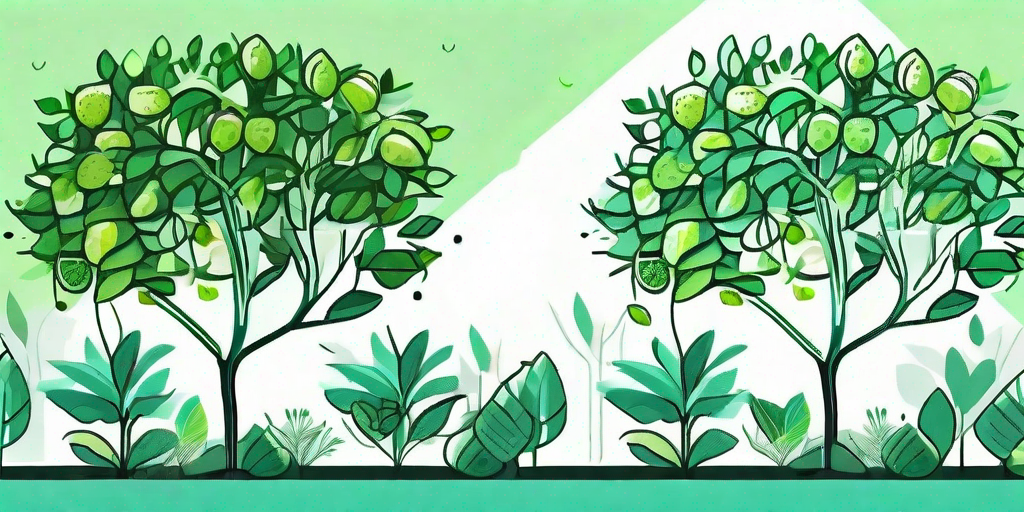
Ah, the lime tree. A citrusy delight that graces many a garden with its vibrant green leaves and tangy fruits. But what happens when those luscious leaves start to curl and wither? Fear not, dear reader, for we have the answers you seek. Let's dive into the world of lime tree care, where we'll explore the causes of leaf curl and how to prevent it, ensuring your garden remains a verdant paradise.
Understanding the Culprit: Why Do Lime Tree Leaves Curl?
Before we can tackle the problem, we need to understand it. Leaf curl in lime trees can be caused by a variety of factors, from pests to environmental stress. It's like a soap opera for plants, with all the drama and intrigue you could ask for.
One common culprit is the citrus leaf miner, a tiny moth whose larvae tunnel through the leaves, causing them to curl and distort. It's a bit like a horror movie, only with more chlorophyll and less screaming.
Environmental stress can also cause leaf curl. This can include anything from temperature extremes to improper watering. Think of it as the plant equivalent of having a really bad day at work.
The Role of Pests
As we've mentioned, pests can be a major cause of leaf curl in lime trees. In addition to the citrus leaf miner, other pests such as aphids, mites, and scale insects can cause similar damage. It's a bug-eat-leaf world out there, folks.
These pests feed on the sap of the lime tree, causing the leaves to curl and distort. It's like a vampire movie, only with more photosynthesis and less brooding.
Environmental Stress Factors
Environmental stress can take many forms, from temperature extremes to improper watering. If your lime tree is too hot, too cold, too wet, or too dry, it may respond by curling its leaves. It's the plant's way of saying, "I'm not happy, and I'm going to make sure you know it."
Other environmental factors can include poor soil quality, lack of nutrients, and exposure to pollutants. It's a tough world out there for a lime tree, but with the right care, they can thrive.
Preventing Leaf Curl: Tips and Tricks
Now that we understand the causes of leaf curl, we can start to address them. Here are some tips and tricks for preventing leaf curl in your lime tree.
First and foremost, keep an eye on your tree. Regular inspection can help you spot signs of pests or disease early, allowing you to take action before the problem becomes too severe. It's like being a detective, only with more gardening gloves and less noir.
Pest Control
For pests, consider using a natural insecticide or a horticultural oil. These can help control pests without harming beneficial insects or the environment. It's like a superhero movie, only with more bugs and less spandex.
Regular pruning can also help control pests. By removing damaged or infested branches, you can prevent the problem from spreading. It's like surgery, only with more leaves and less anesthesia.
Environmental Care
For environmental stress, make sure your lime tree is getting the right amount of water. Too much or too little can cause stress, leading to leaf curl. It's like Goldilocks, only with more hydration and less porridge.
Proper fertilization can also help. A balanced citrus fertilizer can provide your lime tree with the nutrients it needs to stay healthy and resist stress. It's like a multivitamin, only with more nitrogen and less gummy bears.
Frequently Asked Questions
How often should I water my lime tree?
Most lime trees need watering once a week, but this can vary depending on the weather and the size of the tree. It's best to check the soil moisture levels regularly to ensure your tree is getting the right amount of water.
What kind of fertilizer should I use?
A balanced citrus fertilizer is usually the best choice for lime trees. These fertilizers contain the right mix of nutrients to support healthy growth and resist stress.
How can I tell if my tree has pests?
Common signs of pests include discolored or distorted leaves, small holes in the leaves, and a sticky substance on the leaves or ground. If you see any of these signs, it's time to take action.
Conclusion
So there you have it, folks. With a little knowledge and some elbow grease, you can say goodbye to curling lime tree leaves and hello to a healthy, thriving garden. Remember, the key is to understand the causes of leaf curl and to address them promptly and effectively. Now go forth and garden!











